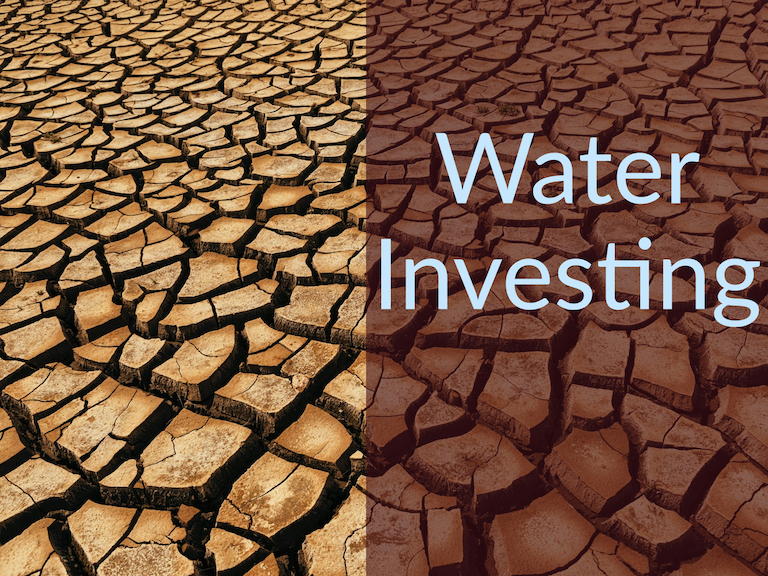What are ways to invest in water and is it an attractive investment?

Topics covered include:
- How water rights work and how they have been overallocated in the Colorado River basin.
- Why agriculture uses the vast majority of water in the southwestern U.S. while contributing only a few percentage points to the region’s gross domestic product.
- Why hedge fund manager Michael Burry invests in farmland instead of water rights.
- What ETFs are available to invest in water
- What have the historical returns been for water stock investing, what are current valuations, and what is the expected long-term revenue growth.
Show Notes
Beyond the Signing by Laura Paskus—Water Education Colorado
Where the Water Goes: Life and Death Along the Colorado River by David Owens
What Happens When The Colorado River Runs Dry—Science Friday
Editorial: There is no drought by The Times Editorial Board
U.S. Southwest, Already Parched, Sees ‘Virtual Water’ Drain Abroad by Diana Kruzman—Coyote Gultch
Does Arizona really use less water now than it did in 1957? by Andrew Nicla—azcentral.
Global water crisis: Investing in water—Fidelity
Episode Sponsors
Related Episodes
301: Use Caution with Alternative Investments
334: How To Invest In Farmland
425: How Profits Motivate Change
Transcript
Welcome to Money For the Rest of Us. This is a personal finance show on money, how it works, how to invest it, and how to live without worrying about it. I’m your host, David Stein. Today’s episode is 345. It’s titled “Investing in water.”
The Colorado River Compact
A couple of years ago I’ve received an email from a listener that owned 25 shares of water rights in Southwestern Colorado, in the Four Corners area, where the states of Arizona, Colorado, New Mexico, and Utah meet. Her rights weren’t attached to any parcel of land; they were senior rights—sometimes called “golden rights”—in that they predated the Colorado River Compact of 1922 by several decades.
The water was from snowmelt from the San Juan Mountains. The Colorado River Compact is an agreement dating back to 1922 amongst seven U.S. states in the Colorado River Basin. It governs how the water from that river is allocated. When the agreement was set up, the Colorado River Basin was divided into an upper basin consisting of 7.5 million acre-feet per year of water, about half of which went to Colorado, 23% to Utah, and then lower allocations to Wyoming, New Mexico, and just a small amount to Arizona. The lower basin was also allocated 7.5 million acre-feet of water per year, with California getting 59% of that lower basin allocation, Arizona 37%, and Nevada 4%. There was an additional 1.1 million acre-feet in surplus that goes to the lower basin, plus 1.5 million acre-feet to Mexico. 1922 was a long time ago.
Today, there are more than 40 million people in two countries that depend on the Colorado River. The Colorado originates in the western slope of the Rocky Mountains. Major tributaries to the Colorado include the Green River, Gunnison, the San Juan River (where this particular listener had water rights), and then major cities depend on it. Denver, Los Angeles, San Diego, Phoenix, Tucson. U.S.’s two largest hydroelectric plants—the Hoover Dam and the Glen Canyon Dam are also on the Colorado River.
Arizona, where we live, most of the year gets a significant percentage of their water from the Colorado River via the Central Arizona Project, which is the largest aqueduct system ever built. It has pumps that lift the water 3,000 feet. There are 15 miles of tunnels and 300 miles of open canal.
The Central Arizona Project ends in Tucson, where excess water is let loose in the desert, West of Saguaro National Park, and then it floods down into the aquifer. The process is known as water banking. It refills the aquifer, and the water is stored there.
The problem with the 1922 Colorado River Compact is the amount of water allocated, about 17,5 million acre-feet, is much more than the river actually produces. Certainly today, but even then.
Eric Kuhn and John Fleck in their book on the Colorado River found that three different studies during the 1920s suggested that the natural flow of the Colorado River was between 14.3 million acre-feet and 16.1 million acre-feet, less than was allocated as part of the Colorado River Compact. So we have what is known as paper water—these legal water rights access to water, and then the actual water itself, the wet water.
As a Money For the Rest of Us Plus member, you are able to listen to the podcast in an ad-free format and have access to the written transcript for each week’s episode. For listeners with hearing or other impairments that would like access to transcripts please send an email to jd@moneyfortherestofus.com Learn More About Plus Membership »
